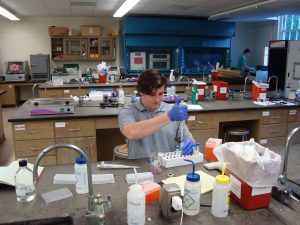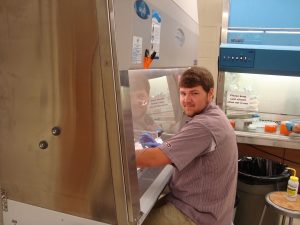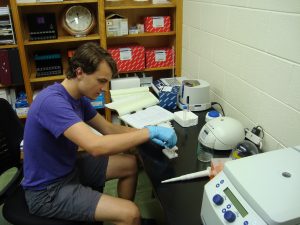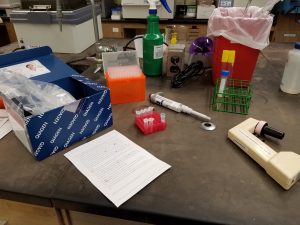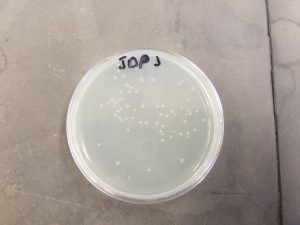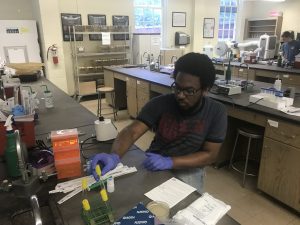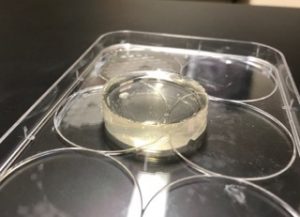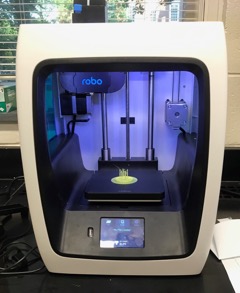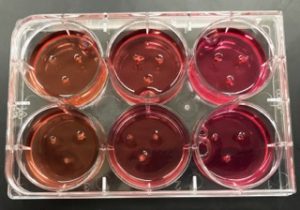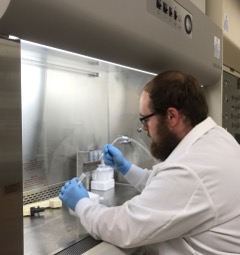This summer, 3 rising H-SC juniors have been conducting melanoma research with Elliott Associate Professor of Biology Dr. Kristian M. Hargadon ’01. David Bushhouse, Coleman Johnson, and Corey Williams are investigating the role of the FOXC2 transcription factor as a driver of melanoma progression. Specifically, Corey has performed extensive phenotypic analyses of various wild-type and genetically engineered melanoma cells to study how FOXC2 expression in melanoma influences the expression of various integrins and other cell adhesion molecules on tumor cells. In related work, Cole has focused on studying how FOXC2 expression within these melanoma cells influences tumor cell adhesion to both the extracellular matrix and lymphatic endothelial cells, processes that are instrumental in determining whether or not a tumor is able to metastasize to distant sites in the body. In conjunction with this work, David is performing chromatin immunoprecipition studies to determine whether the regulation of cell adhesion molecule gene expression in melanoma cells that is driven by FOXC2 results from a direct interaction between this transcription factor and specific gene segments within the DNA of melanoma cells. Collectively, this work is shaping our understanding of FOXC2’s role in melanoma progression and has the potential to identify several potential targets for cancer therapies designed to interfere with the progression of this cancer. Cole and Corey were recently accepted into the Virginia Commonwealth University School of Medicine Early Selection Program, and David is planning to pursue a Ph.D. in the biomedical sciences.

